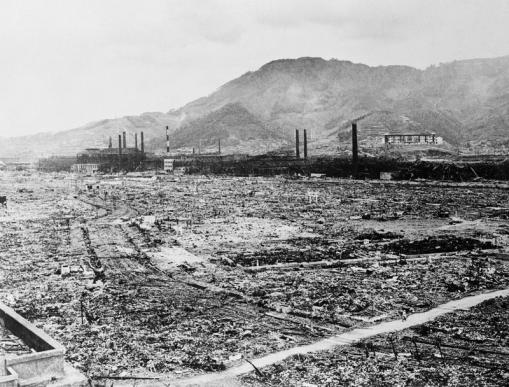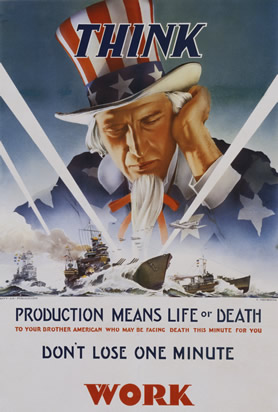Japanese Internment
Camps:
Following the Japanese
attack on Pearl Harbor on December 7, 1941, President Franklin D. Roosevelt
issued Executive Order 9066, which permitted the military to circumvent the
constitutional safeguards of American citizens in the name of national defense.
The order set into
motion the exclusion from certain areas, and the evacuation and mass
incarceration of 120,000 persons of Japanese ancestry living on the West Coast,
most of whom were U.S. citizens or legal permanent resident aliens.
These Japanese Americans,
half of whom were children, were incarcerated for up to 4 years, without due
process of law or any factual basis, in bleak, remote camps surrounded by
barbed wire and armed guards.
Rather, the causes for
this unprecedented action in American history, according to the Commission on
Wartime Relocation and Internment of Civilians, "were motivated largely by
racial prejudice, wartime hysteria, and a failure of political
leadership."
Almost 50 years later,
through the efforts of leaders and advocates of the Japanese American
community, Congress passed the Civil Liberties Act of 1988. Popularly known as
the Japanese American Redress Bill, this act acknowledged that "a grave
injustice was done" and mandated Congress to pay each victim of internment
$20,000 in reparations.
The reparations were
sent with a signed apology from the President of the United States on behalf of
the American people. The period for reparations ended in August of 1998.
Despite this redress,
the mental and physical health impacts of the trauma of the internment
experience continue to affect tens of thousands of Japanese Americans. Health
studies have shown a 2 times greater incidence of heart disease and premature
death among former internees, compared to noninterned Japanese Americans.
"In
the detention centers, families lived in substandard housing, had inadequate nutrition
and health care, and had their livelihoods destroyed: many continued to suffer
psychologically long after their release"
"At
Gila, there were 7,700 people crowded into space designed for 5,000. They were
housed in messhalls, recreation halls, and even latrines. As many as 25 persons
lived in a space intended for four."
"In
desert camps, the evacuees met severe extremes of temperature. In winter it
reached 35 degrees below zero, and summer brought temperatures as high as 115
degrees. Rattlesnakes and desert wildlife added danger to discomfort."
"When
we first arrived at Minidonka, everyone was forced to use outhouses since the
sewer system had not been built. For about a year, the residents had to brave
the cold and the stench of these accomodations."
*****************************************************************
1. DIRECTIONS: After reading the
above information and quotations about Japanese Interment Camps and looking at
the pictures from PBS, write a 10-line response (5-lines if typed) which addresses the
following questions:
- Which is more important: safety or freedom?
- Can certain measures, such as internment camps,
wiretapping, searching your house without a warrant, being denied a
lawyer, and torture be justified during a time of war? Explain which
measures you find justifiable and which are not and why you think so.
- How would you feel as an American citizen if you were sent to the types of internment camps that so many Japanese Americans were sent to? What would be the hardest part for you? What would you say to the President and Congress?
*****************************************************************
The Atomic Bomb:
DIRECTIONS:
2. Visit the timeline of the Race to Build the Atomic Bomb and the timeline of Atomic Bomb: Decision, and record what you think are the FIVE most important events on the timeline and a brief explanation of each. (NOTE: You must include at least ONE event from each of the two timelines.)
3. Write a 5 sentence response to whether or not the U.S. should have dropped the atomic bomb on Hiroshima and Nagasaki to end World War II. You should consider the images, the timeline, and the following pieces of information in your response:
- "With the end of the European war, the Allies focused their efforts on Japan. Japan still fought fanatically, despite being badly hurt by bombing and blockade." (Long)
- "Some historians argue that millions of Japanese and American troops would have died in [another] invasion [of Japan]." (Moss)
- "The U.S. chose military methods of ending the war rather than diplomatic methods. The desire for revenge helped make military methods more attractive." (Long)
- "Experts say Japanese soldiers killed many Asians unnecessarily. Soldiers also sexually attacked many Asian women or used others as sex slaves." (Moss)
- "More than one hundred thousand people would be killed instantly. Many others would suffer horribly. The effects of the bomb included severe radiation, which caused many people to develop cancer." (Dowling)
- "Soon after the war, the Soviet Union (now Russia) learned the secrets of nuclear weapons. Today, in addition to the United States and Russia, France, Great Britain, China and Israel have discovered the technology of nuclear weapons, and many other nations, including India, South Africa, Iraq, Iran and North Korea possibly have nuclear technology." (Dowling)
- "Soviet leader Nikita Khrushchev described our planet after a full nuclear war as a place where 'the living would envy the dead.'" (Dowling)












